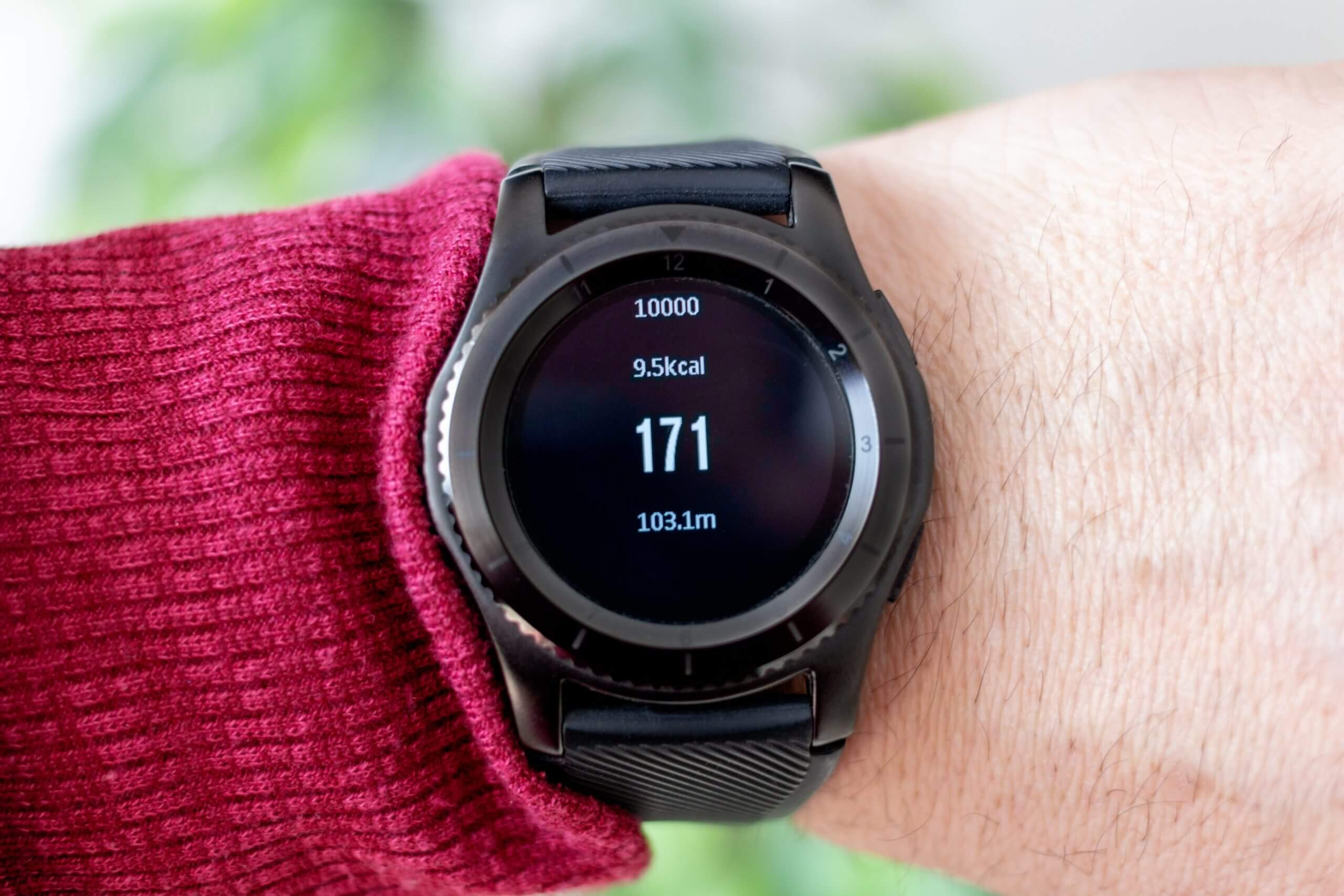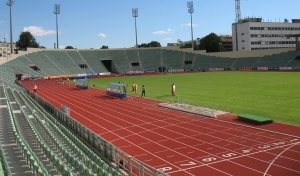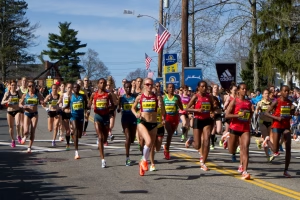What are the benefits of using heart rate in your training?
Most people do:
- Ensuring you are running fast enough on your hard workout days
Some people do:
- Ensuring you are running slow enough on your recovery days
Few people do:
- Helping you manage your pacing during hot and humid training and racing
- Ensuring adequate recovery after hard training
- Alerting you to the added stress of illness
Your heart rate operates within a range between your resting heart rate and your maximum heart rate. How high or low depends on the total cardiovascular load at that moment. You can take advantage of this information because it tells you how fast your engine is running during times of work and rest. During times of work, the major job of your cardiovascular system is to provide energy to your working muscles.
The energy needed for endurance is supplied mostly through metabolism involving oxygen – you breathe harder and your blood pumps faster. This is why monitoring heart rate is more useful for endurance athletes compared with strength and power athletes. But don’t forget that your heart rate can also indicate the overall level of stress and recovery during times of rest – during sleep and waking activities requiring minimal physical exertion. Remember that you get better during recovery – that is when your body adapts, so you want to know how that is going for you.
Both of these are important because training exploits these alternating periods of stress and recovery to stimulate improvement. Distance runners must adjust their training load to the right level and then ensure that there is adequate recovery. You get the balance right if you optimize both training load and recovery. If one side of the balance is off, it always affects the other side.
How to measure your heart rate
You can do this manually or with technology. Let’s go from cheapest to most expensive (but it’s not that expensive).
- Put two fingers on your inner wrist or on one side of your Adam’s apple. Don’t press too hard. If you measure for 10 seconds, multiply by 6 to get beats per minute. if you measure for 15 seconds, multiply by 4 to get beats per minute. Start your count with zero instead of one. This method works well when you are not moving, but when you are running, it takes a bit of practice.
- Use a heart rate monitor watch and chest strap. Men can wear this just below their chest muscles. Women can wear this under the bottom hem of their sports bra. Sometimes the chest strap can be slid into the bra itself. It helps to have the skin underneath the chest strap moist because this helps the device pick up the electrical activity from your heart that propagates through the soft tissues to your skin. This is generally not a problem during running because of sweating, but it is something to keep in mind if it is cold or you are still warming up.
Use a specialized running watch or smart watch. These usually have a built-in heart rate monitor that shines infrared light through the skin of your wrist from the backside of the watch face. With each heartbeat the movement of the blood makes the color underneath your skin change slightly. These fluctuations indicate the heart rate.
How to measure your resting heart rate
Your true resting heart rate reflects a time of minimal exertion, like when you are sleeping. If you have a smart watch that measures your heart rate you can wear your watch all night and the watch will determine the lowest heart rate achieved. I’m not going to suggest wearing a heart rate monitor chest strap overnight, since that would be uncomfortable.
If you don’t have a smartwatch, the best suggestion is to manually measure your heart rate just after waking, but before you have engaged in any significant movement. I suggest counting for one minute while looking at a clock or watch that shows the seconds.
How to measure your maximum heart rate
The classic prediction of maximum heart rate is the equation: 220 – age. According to this, a 20 year old would have a maximum heart rate of 200 beats a minute and a 50 year old athlete would have a max of 170 beats a minute. However, there is evidence that this doesn’t always hold (science link) and so it is probably best to measure your maximum heart rate directly. Of course, this assumes that you are medically cleared to do so because it requires strenuous running.
A specialized watch or chest strap makes it easy, but you still have to put in the effort to get your heart rate to its maximum. There are normally a few situations in which this will occur. An actual race is a logical choice, but make sure the distance is not too long because in a longer race leg fatigue might limit your heart rate from getting to its maximum. Accordingly, middle distance races such as 800, 1500, 3000, and 5000m are good choices. Simply have your watch record your heart rate during the race and you will likely get to your maximum heart rate by the end, if not before.
Outside of races, I suggest an intense workout of two reps of 800 meters separated by two minutes. It is challenging to do it by yourself, but your heart rate at the end of the second repetition will likely be a good representation of your maximum. Go through a full warmup before this so your legs are ready to do the work. If your legs are not ready, you won’t run as fast and your heart rate may not increase as much.
Heart rate training zones
This is what most athletes want to know. Heart rate training zones are typically used to define recovery, easy, medium, and intense running efforts. Runners use these to achieve the ideal training stimulus from their strenuous running workouts and to ensure that easy runs are slow enough to permit adequate recovery. In addition to heart rate, training zones can also be defined according to absolute running pace, rating of perceived exertion, blood lactate concentration, breathing thresholds, and oxygen consumption (science link). Running pace and perceived exertion are easy to measure, but the other variables require a physiology lab that is not available to most people. So, heart rate is a good objective measure that takes into account the total internal load. The internal load reflects what the physiological processes inside your body are being asked to do.
Here are two different zone schemes from the scientific literature, with examples for maximum heart rates of 200 bpm and 170 bpm.
A 3-zone scheme (science link)
| Zone | % max HR | If max = 200 bpm | If max = 170 bpm |
| 1 | 65-82 | 130-164 | 110-139 |
| 2 | 82-92 | 164-184 | 139-156 |
| 3 | >92 | >184 | >156 |
The above scheme is simple to follow because it only has three zones and the ranges of heart rates are nice and wide. It may not provide the necessary precision to target specific race paces, but it will certainly develop general endurance fitness.
A 7-zone scheme (science link)
| Zone | % max HR | Pace | If max = 200 bpm | If max = 170 bpm |
| 1 | 62-82 | easy/moderate | 124-164 | 105-139 |
| 2 | 82-87 | marathon | 164-174 | 139-148 |
| 3 | 87-92 | half-marathon | 174-184 | 148-156 |
| 4 | 92-95 | 10,000 m | 184-190 | 156-162 |
| 5 | 95-100 | 3000-5000 m | 190-200 | 162-170 |
| 6 | 100 | 800-1500 m | 200 | 170 |
| 7 | – | sprint | – | – |
The above scheme precisely targets the different race paces. However, the difficulty is in the tighter heart rate ranges. It can be challenging work within a range of just six beats per minute, as would be the case for zone 4. If you can’t dial in your pace, you will find yourself in zone 3 or 5.
Do you see why it’s important to understand your true maximum heart rate? If you get that wrong, it will greatly affect how you approach zones 5 and 6. For example, if you think your maximum heart rate is 190 but it is actually 200, it would affect your ability to truly target the paces of zones 5 and 6.
Please also remember the benefit from using the lower zones too. At slower paces, the goal is often to accumulate large volumes of training. In this case, you would be using those heart rate zones to restrain your running pace so that you don’t develop fatigue. You would be applying the principle of long slow distance to elicit beneficial adaptations to your cardiovascular system.
Heart rate during hot and humid conditions
Athletes know only too well that hot and humid conditions reduce endurance performance during training and racing. During normal conditions much of your blood is directed to your working muscles for energy supply reasons. During exercise in hot and humid conditions, however, your blood does double duty because it must also be directed to the skin where it can assist in cooling. Accumulated heat in your body is taken by the blood to the skin where it is released into the environment. Although heat acclimation can reduce some of this undesirable effect athletes of all levels are affected. So, as long as you understand this expectation, how can you monitor and organize your training with this in mind?
First understand that heart rate will be increased for a given running pace (science link). The size of this increase depends on the individual, so it would be best to test this yourself by comparing summer and winter heart rate for a few key running speeds, assuming that there’s no great change in fitness.
So, if you are using heart rate training zones how should you adjust those, if at all, during hot and humid conditions? Actually, your training zones can remain stable (science link), meaning that you can use the same heart rate percentages. You will run slower in each zone but you will be giving your body the same training stimulus. So, if you want to run in a particular zone, simply target the same heart rate and understand that your running pace will be accordingly slower. Thus, within each zone, your blood lactate levels and breathing thresholds will be the same. This is nice because it doesn’t require you to recalculate your training zones every time there is a change in the weather.
Once temperatures become more reasonable again, you will automatically return to faster paces because thermal stress is gone. Of course, the hope is that you will have improved your fitness over the summer season and perhaps will run faster from that aspect as well.
Heart rate and overtraining
One of the most important principles in training is consistency. Ideal training means that you never have to miss a session because of inadequate recovery. This is unrealistic because we can’t perfectly predict how we will respond to every session. We also have stress from outside of running. But most of us want to do as much as we can, but not too much.
There are many ways to use heart rate to indicate training adaptation, fatigue, and overtraining. In this article we’re going to focus on resting heart rate and maximum heart rate because they are the most simple indicators that you might be overdoing it. Because heart rate is a central function, it doesn’t only indicate your running intensity. Rather, it can be one measure of overall system stress. Anything that affects your physiology can affect your heart rate, whether it is running workout fatigue due, psychological stress, or an actual illness.
Assuming that you would like to do as much training as you’re able to tolerate, your major concern is going to be overtraining. Overtraining occurs on the longer term when you are unable to recover adequately from previous training sessions. Fatigue is tolerable over the short term but if it continues indefinitely, it leads to a situation of overtraining – fatigue is dominant, performance is decreased, and your injury risk goes sky high. The earlier you can detect possible over training the quicker you can adjust your training program to make it more tolerable. Overtraining never leads to your best performance. Your goal is to optimize training stresses so this doesn’t happen.
Both resting and maximum heart rate can help identify overtraining. Maximum heart rate can be reduced in situations of overtraining, while resting heart rate is often increased with overtraining (science link). The key is to monitor both, particularly resting heart rate, in a diary to establish what is normal for you. Only then can you identify departures from normal that alert you to something wrong. It is best not to depend so much on monitoring maximum heart rate because many training sessions do not require you to achieve a maximum heart rate. Don’t depend on just a few measurements either. Measure consistently in a diary to ensure an appropriate training program then you can dial back as needed as quickly as possible.
Heart rate and illness
Not only can heart rate monitoring help detect overtraining but it can also indicate illnesses such as bacterial and viral infections. The pattern of change is similar: a decreased maximum heart rate and an increased resting heart rate. One case report on an elite marathon runner showed that resting heart rate was about 11 beats a minute higher and maximum heart rate was about 13 beats a minute lower while the athlete had a viral infection (science link). Sometimes sickness feels so bad that you don’t feel like training, so your course of action is obvious. The best way, though, would be to use this as an early warning system so that training can be modified appropriately to decrease the overall stress on the body. It’s far better to lose two or three days of training than it is to lose one or two weeks of training because you overdid it while sick and ended up in a worse situation than necessary.
Final thoughts
Become a student of your body. Getting to know your own heart rate is an easy way to learn about your own physiology. This will not appeal to everyone, but if you are a serious athlete looking for an edge, no matter what level you are, this can be a valuable part of your repertoire. If you have a coach, talk about ways you can incorporate this into your programming. Use it as another way you can communicate to your coach how you are responding to the training. If you are self-coached, diarize these things so you can make more intelligent decisions!
How do you use heart rate to optimize your training and recovery? Have I left out anything? Please let me know in the comments!




